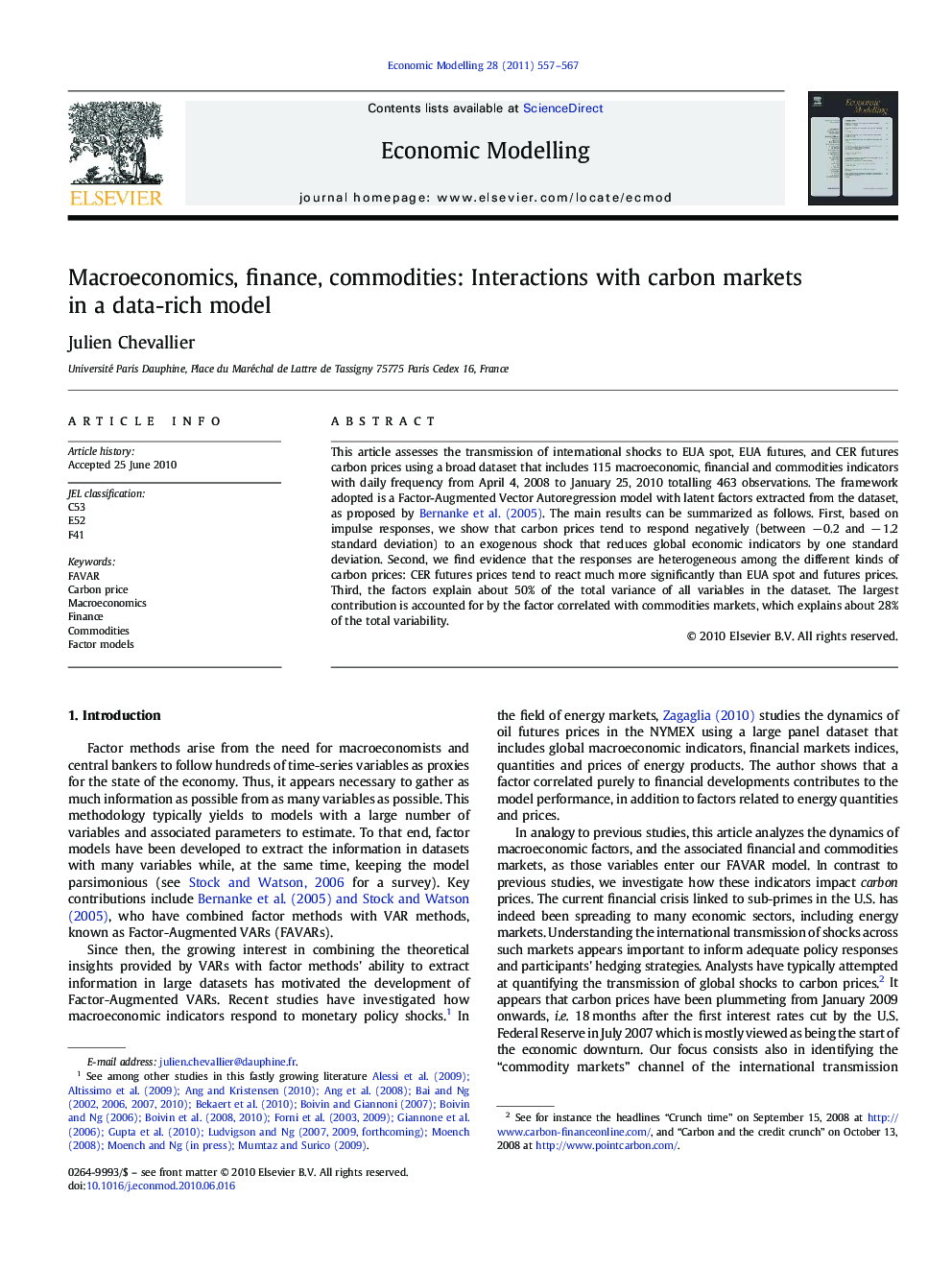| Article ID | Journal | Published Year | Pages | File Type |
|---|---|---|---|---|
| 5055817 | Economic Modelling | 2011 | 11 Pages |
This article assesses the transmission of international shocks to EUA spot, EUA futures, and CER futures carbon prices using a broad dataset that includes 115 macroeconomic, financial and commodities indicators with daily frequency from April 4, 2008 to January 25, 2010 totalling 463 observations. The framework adopted is a Factor-Augmented Vector Autoregression model with latent factors extracted from the dataset, as proposed by Bernanke et al. (2005). The main results can be summarized as follows. First, based on impulse responses, we show that carbon prices tend to respond negatively (between â 0.2 and â 1.2 standard deviation) to an exogenous shock that reduces global economic indicators by one standard deviation. Second, we find evidence that the responses are heterogeneous among the different kinds of carbon prices: CER futures prices tend to react much more significantly than EUA spot and futures prices. Third, the factors explain about 50% of the total variance of all variables in the dataset. The largest contribution is accounted for by the factor correlated with commodities markets, which explains about 28% of the total variability.
